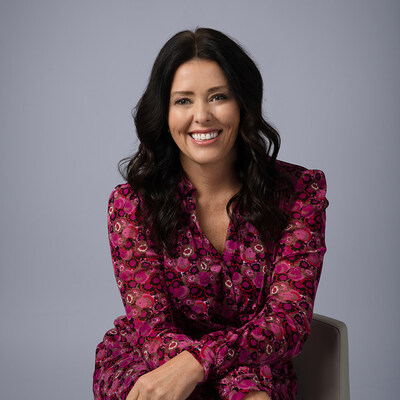There’s an old Washington, D.C. adage that an honest politician is one who, when bought, will stay bought. Were this true in the consumer arena, loyalty marketing programs would be easy to design, and their effectiveness would be unimpeachable.
But it’s not. Loyalty marketing encompasses more than simple rewards programs, whether through points or price reductions. In fact, such programs, if not coupled with well-thought-out consumer benefits packages, can actually be counterproductive, creating a consumer who is more price sensitive and rentable than other consumers.
It is easy to understand the appeal of a points-based loyalty program to a company. Such a program, when initially implemented, can cause a short-term bump in repeat business. But it is not without its drawbacks.
“Repeat usage does not necessarily mean a member is loyal,” says Kim Frankel, director of loyalty marketing for Chapel Hill, NC-based Customer Management Services. “When an organization simply purchases a member’s loyalty, it remains vulnerable to competitors who can duplicate that very public value proposition.”
One example of how a relationship is built through a combination of hard and soft benefits is the Gold Crown Store card, a program run by Kansas City, MO-based Hallmark Corp.
“People are visiting Gold Crown stores to nurture the relationships in their lives, and we want to be one more relationship,” says Gold Crown card manager Elizabeth Murphy.
While Hallmark has modified the point rewards structure since the program was launched, lowering the base amount needed to become a fully fledged participant while adding more ways to receive points, the program is not just about hard rewards.
“A points-based program becomes a means of discounting. It’s not building a relationship. It’s not a loyalty promotion. It’s a price promotion. That is not what this program is all about,” says Murphy.
Hallmark tries to strike a balance between hard and soft value added through the program. A purely point-based relationship, says Murphy, could not be sustainable for a long time, “and we are interested in building long-term relationships.”
Soft offers include special notice when Hallmark launches a new product line. Gold Crown card members have access to a priority service telephone number. Through the analysis of purchase patterns, the chain generates advance notice of ornaments for the significant percent of the population identified as collectors, and reminders for Christmas-only buyers, as opposed to year-round patrons.
Does the program stimulate activity? Of the 18 million cardholders, more than 60% used their card within the last year, totaling more than a quarter of all store transactions. And, over a third of the revenue realized by Gold Crown stores is on the card.
But point and rewards programs are not necessarily bad per se: Taken in conjunction with softer benefits that appeal to the heart as well as the wallet, they can provide an effective one-two punch.
“In 17 years of designing and running these programs I have not seen any that succeed without a benefit-related approach, either through selective discounting or a tangible reward structure that allows you to maintain your price structure,” says Rick Barlow, president of Frequency Marketing Inc., a frequency marketing agency in Cincinnati.
Barlow cites a customized newsletter he designed for one client. The newsletter was 16 pages, and printed in full color. The client ordered extensive versioning-171 different combinations were created and segmented based on life-event preferences and transactions.
“After a few efforts, the customer realized that this is just more sales. ‘So they know my name,’ they would ask. ‘What’s in it for me? Do I get something extra?’ The age of the low-hanging loyalty fruit is over,” says Barlow.
But points programs are no substitute for building an emotional bond between the consumer and the company, says Dick Dunn, vice president, business development for Carlson Marketing Group in Minneapolis. “How many Harrier jets do you want?” asks Dunn, referring to the recent Pepsi points promotion. “Programs like that are not building a relationship, they are buying your business. A better offer comes along and you’re gone.” Pepsi, Dunn notes, had no way of knowing whether a customer had been using its product and saving the points-or if the customer had abandoned the product.
Other candidates for loyalty marketing programs are industries where competition is just heating up, such as telecommunications and utilities. BC Tel, the incumbent telecommunications company in British Columbia, began exploring loyalty marketing in 1994, when its market was opened to competition. In late 1996 the company began to rethink its focus and started looking at the total consumer relationship.
“We may be slightly different than your traditional competitive supplier. We are a dominant player in a market opened to competition, and loyalty is a big issue for us as new entrants come in and go after market share,” says database marketing manager Bob Boroski.
Using Exchange Application’s Valex, a campaign management system, the company has achieved greater levels of personalization in its contacts. As people sign up with BC Tel, they are immediately sent personalized welcome letters. This represented a step up from the batch processing of welcome letters, which previously could take as long as four months to generate.
The increased sensitivity to timing also led BC Tel to generate up-to-date loyalty efforts-increased benefits, statements, user membership awards-based on when its customers entered the program.
The hard rewards BC Tel provides are traditional offerings, which include AirMiles, a Canadian airline points program, and telephone equipment, although it is looking to deliver additional benefits that meet its customer’s needs. “Consumers are being a lot more careful in information that they offer. We are trying to provide them with enough value to reinforce that the more we understand about them the better we can provide for their needs.”
One never knows where a little warm and fuzzy might tip the scales. According to preliminary results of a loyalty survey conducted by River Edge, NJ-based Harte-Hanks Market Research vice president Laura Rifkin, around 70% of the study’s respondents don’t see a clear benefit to being loyal to a company. Furthermore, basic reward programs do motivate people, but by no means a majority of the respondents.
“One of the things that we are starting to see is an advantage when a company has a one-to-one relationship with a customer. In insurance, where you might have the agent as a representative of the company, that allows the company to address customer’s needs properly.”
In the case of Connecticut insurer Travelers Property Casualty, a series of warm and fuzzy messages was the core of its loyalty program.
“Over the last few years loyalty retention has become a key element in our policyholder marketing efforts. Acquisition costs are quite high, and we realized that retention was the cheapest way to increase our policy base,” says Allison Bond, director, national agency sales and operations. “The first five years with an insurer are critical,” she notes.
Until three years ago, Travelers was experiencing a 17.5% attrition rate within that five-year period.
Through focus groups, the company found that customers leave for two reasons: price and service. An often-heard complaint was “When somebody wanted my business, everybody wanted to talk, but since then I have not heard from anybody.”
When questioned about the process that influenced their decision to leave, 62% said they left without talking to an agent. More important, 86% indicated that they were more inclined to stay when their agent got personally involved in the retention efforts-a figure significantly higher than the overall attrition rate Travelers was seeing.
Travelers developed a mix of business and relationship mailings for its agents. While some, especially those around renewal time, had a call to action, others, such as a Thanksgiving card or a simple thank-you note, were simply tangible efforts that allowed the policyholder to be reminded of the value of owning a policy.
The renewal effort Travelers designed furthered the idea of agents listening to their customers. It focused around a policy review, and the opportunity to update it as appropriate. Even when customers did not take the opportunity to change their coverage, they appreciated being asked about themselves.
There were hard benefits for the agents, who had a choice as to whether or not to use the retention programs generated by Travelers: Those that used them realized a 389% return on their investment. Travelers received a benefit as well: Over the last three years, the attrition rate has shrunk to 13.5%, which they attribute to the increased levels of communication.
At Marriott Lodging Inc., Washington, DC, Lynne Roach Hildebrand, VP of database marketing, says that while the company’s loyalty program, Marriott Rewards, does use points to track use, it is focused on its soft rewards. “I think customers who become frequent patrons believe that they have an entitlement to a powerful mix of hard and soft benefits.”
Marriott, she says, will actually create customer segments based on like behavior or lifestyle-did the guest require a business center or a data port?-and provide non-publicized offers, outside of their frequency program, to those individuals.
Marriott sees tangible results from its programs. Rewards customers, according to Hildebrand, are much more likely to respond to surveys and requests for information, and with a higher degree of completeness. “They over-respond,” she says. “Through the exchange of customer information we can provide incremental benefits and recognition that enables us to earn their frequent patronage.”
Marriott is constantly seeking to co-market its loyalty program with other entities. Like many hotels, some of its brands have set up affinity programs with airlines. Marriott also offered an Honored Guest program to its Rewards customers who took a Toyota for a test drive.
Stevan A. Grosvald is a principal of Grosvald & Associates, a relationship marketing company with an emphasis in the travel industry. Grosvald was with United Airlines when its Mileage Plus program was launched in 1981, and also had a hand in developing the OnePass program while working at Eastern Airlines. The co-marketing of loyalty programs, particularly among the airline and hospitality industries, have become ubiquitous.
“These days, airline miles are like a second national currency in the United States,” he says.
Grosvald feels that airline programs can stimulate use, within limits. If participants are near a milestone at the end of the year, they may be more inclined to do something-rent a car, stay at a hotel, take a trip-to put them over the top.
 Network
Network

